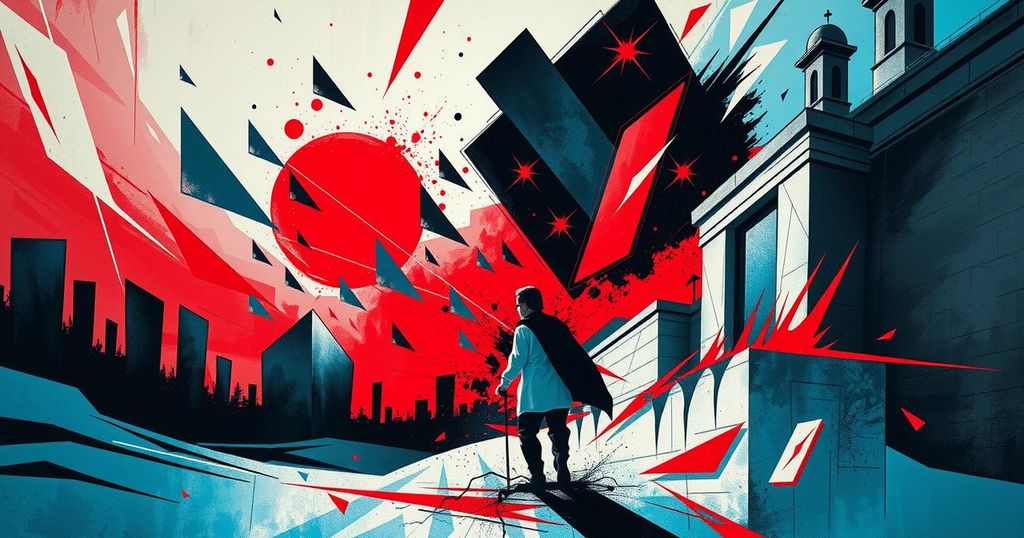How Trump Changed American Politics Over the Last 10 Years
Ten years after Donald Trump announced his presidential campaign, the U.S. political landscape has significantly transformed. Key changes include the GOP moving away from Reagan conservatism, the decline of truth in politics, an uptick in conspiracy theories, and the erosion of Democratic leadership. Trump’s authoritarian tendencies and impact on institutional trust are prevalent, while education gaps and a focus on immigration politics have emerged as defining issues. Overall, the political fabric has been dramatically altered over the past decade.
As we mark a decade since Donald Trump began his presidential bid, the landscape of American politics has dramatically transformed. Once dismissed as a fleeting novelty, Trump has proven he’s left an indelible mark on the political fabric of the country, spanning various aspects that have shaped the GOP and the Democratic Party.
First on the list is the GOP’s shift away from traditional Reagan conservatism. The Republican Party, once characterized by a hawkish stance on foreign politics, now leans towards non-interventionism. A recent poll revealed that the percentage of Republicans favoring isolationist views rose from 30% in 2015 to over 50% today. This new brand embraces pragmatic, even Machiavellian tactics, allowing election results to be contested without consequence, and sidelining once-sacrosanct ideals of democracy and morality.
Next, truth has taken a backseat in political discourse. Trump’s administration generated over 30,000 documented falsehoods during its first term. At this point, his fabrications are often ignored by the media and have become commonplace among his supporters, who seem willing to overlook misinformation in favor of loyalty, creating a disturbing norm around untruths in politics.
Conspiracy theories, too, have gained traction under Trump’s influence. Beginning with the birther conspiracy against Barack Obama and culminating in the false claims surrounding the 2020 election, these narratives have not only proliferated but have solidified into beliefs among many GOP voters. This trend isn’t just limited to Trump; it reflects broader issues regarding the media landscape, where unchecked information spreads like wildfire.
Then there’s the decline of Democratic leadership. Observing their election trajectory, the party has struggled to present strong candidates and faces the challenge of an aged leadership that has had difficulty adapting to the confrontational Trump era. Key demographic shifts have seen support erode among groups like Latinos and Black men, further complicating their future in politics.
The legislative process itself seems slackened by the Trump administration, a bit more than just simple gridlock. With Congress more sidelined than ever, the President has regularly exercised executive powers more aggressively, often to the chagrin of congressional members who have opted not to assert their authority, resulting in record numbers of executive actions.
Moreover, Trump’s style has incited what some may label as authoritarianism, particularly among his supporters. Polls illustrate a worrisome shift in how some Republicans view checks and balances, showing an increasing acceptance of unilateral executive power in the name of efficiency, sparking concerns about the future of democracy.
As for the institutions of our government, Trump has cast a long shadow over them, fostering an atmosphere where allegiance to him has become the sine qua non for party loyalty. Distrust towards foundational institutions has surged among Republicans, with nearly a fifth expressing confidence in Congress, media, or the justice system, further exacerbated by Trump’s contentious relationship with the judiciary.
Fear has also surged into political discussions, with significant examples of violence and threats that have occurred since Trump’s ascendancy. Some GOP members have cited fear for their safety as a reason they comply with Trump’s directives, contributing to a broader culture of intimidation in politics.
Another notable change has been the education gap. The divide has become stark, with the Democrats now generally perceived as the party of the educated, while Republicans have solidified their stance as the party of the non-college educated working class. This troubling shift has transformed voter dynamics, a reality not lost on the parties.
Lastly, Trump radically reframed the immigration debate. What once was a vital concern among Republicans has surged to a forefront issue, with strict enforcement policies dominating the political conversation. His hyperbolic remarks on immigration came to define a significant aspect of his presidency, proving to be both divisive and politically advantageous.
As we consider these pivotal changes, the implications for American politics remain profound, shaping everything from party dynamics to public trust and policy-making. The question now is how long these shifts will last and what they mean for future elections and governance.
Reflecting on the last decade of Trump’s influence reveals substantive shifts in American politics. From a dramatic realignment of GOP values to a troubling embrace of misinformation and conspiracy theories, Trump’s era has left both parties reeling. As the political landscape continues to evolve, these changes will undoubtedly play a critical role in shaping the future of governance and public opinion in the United States.
Original Source: www.cnn.com




Post Comment